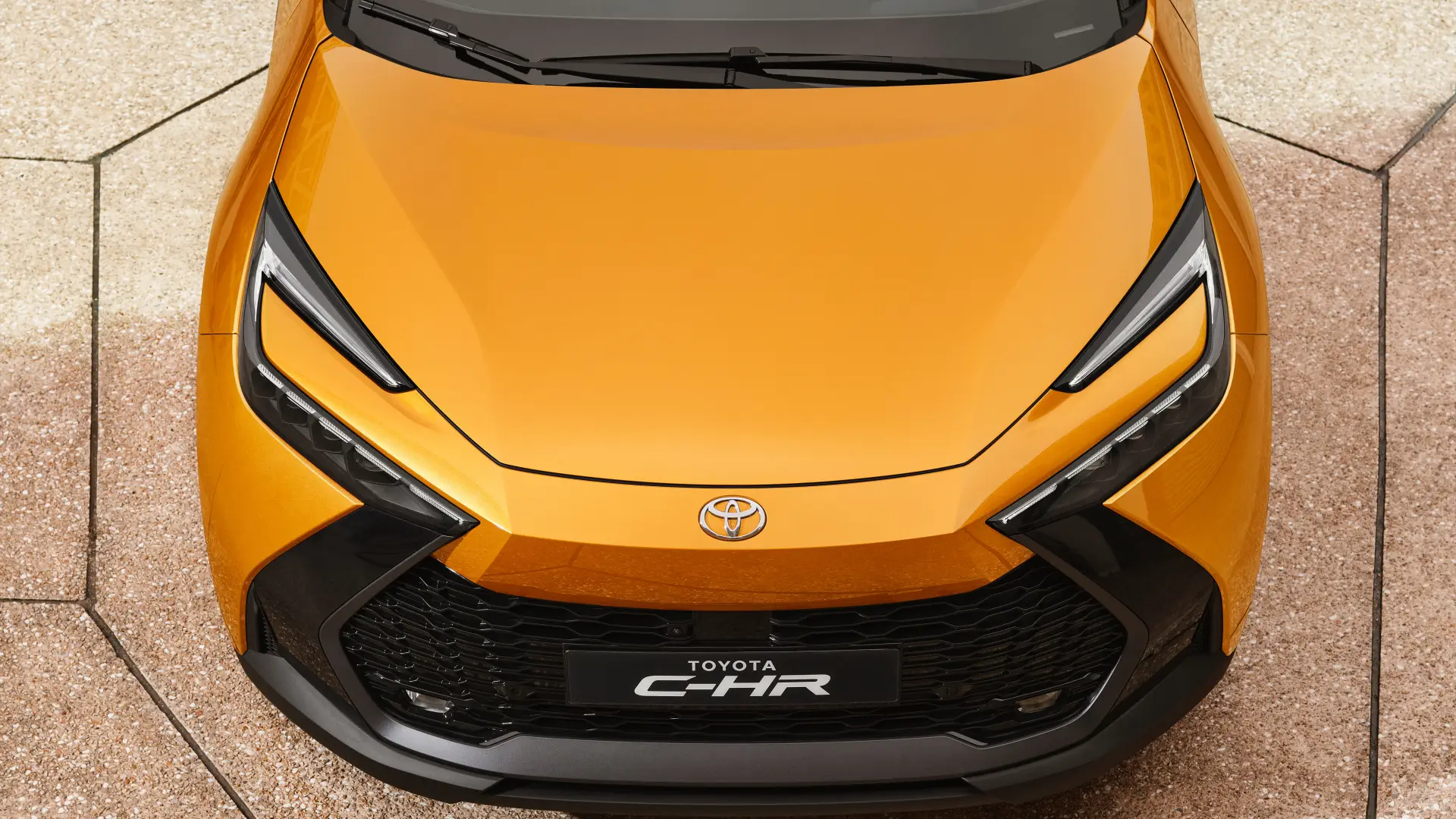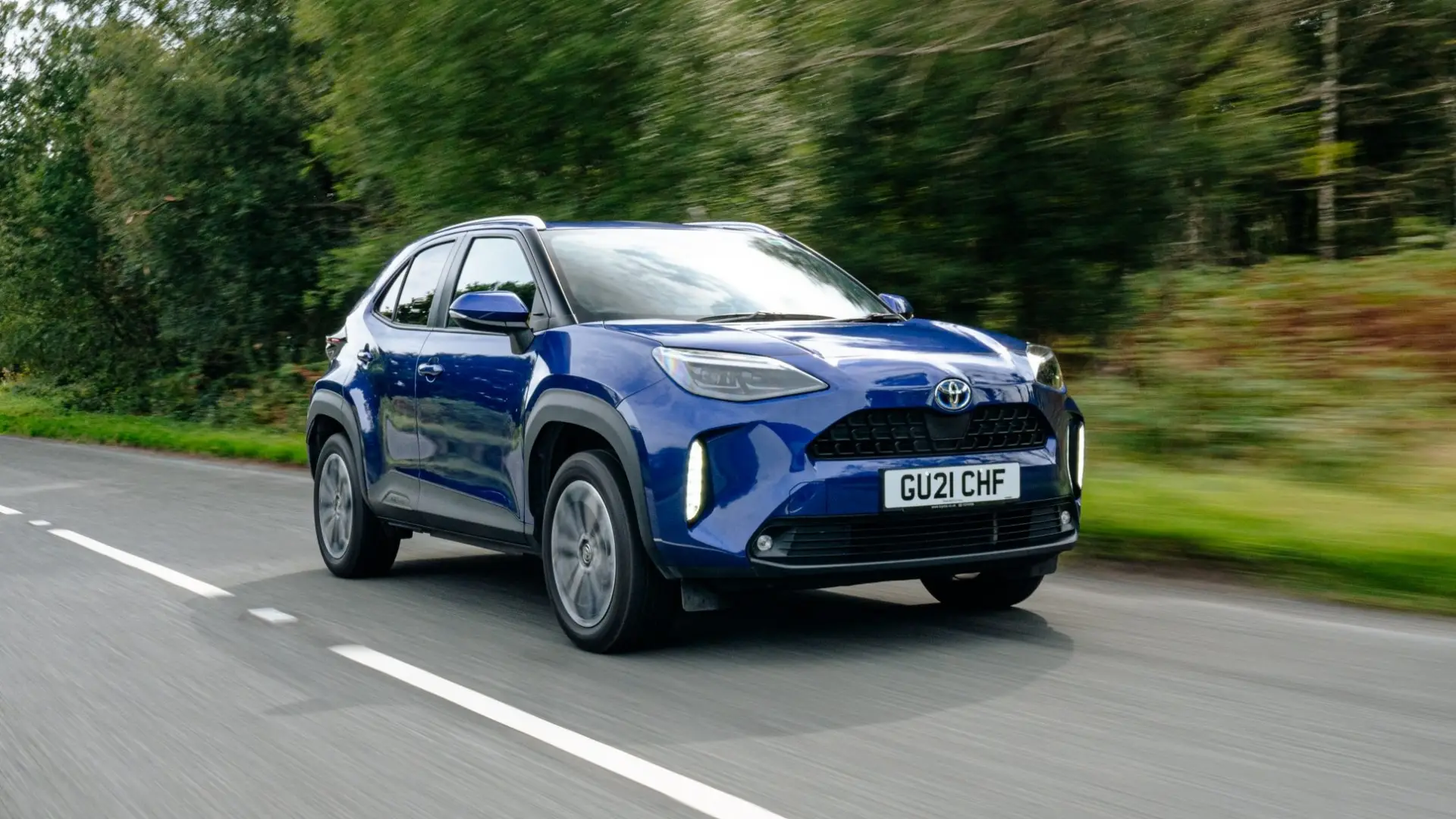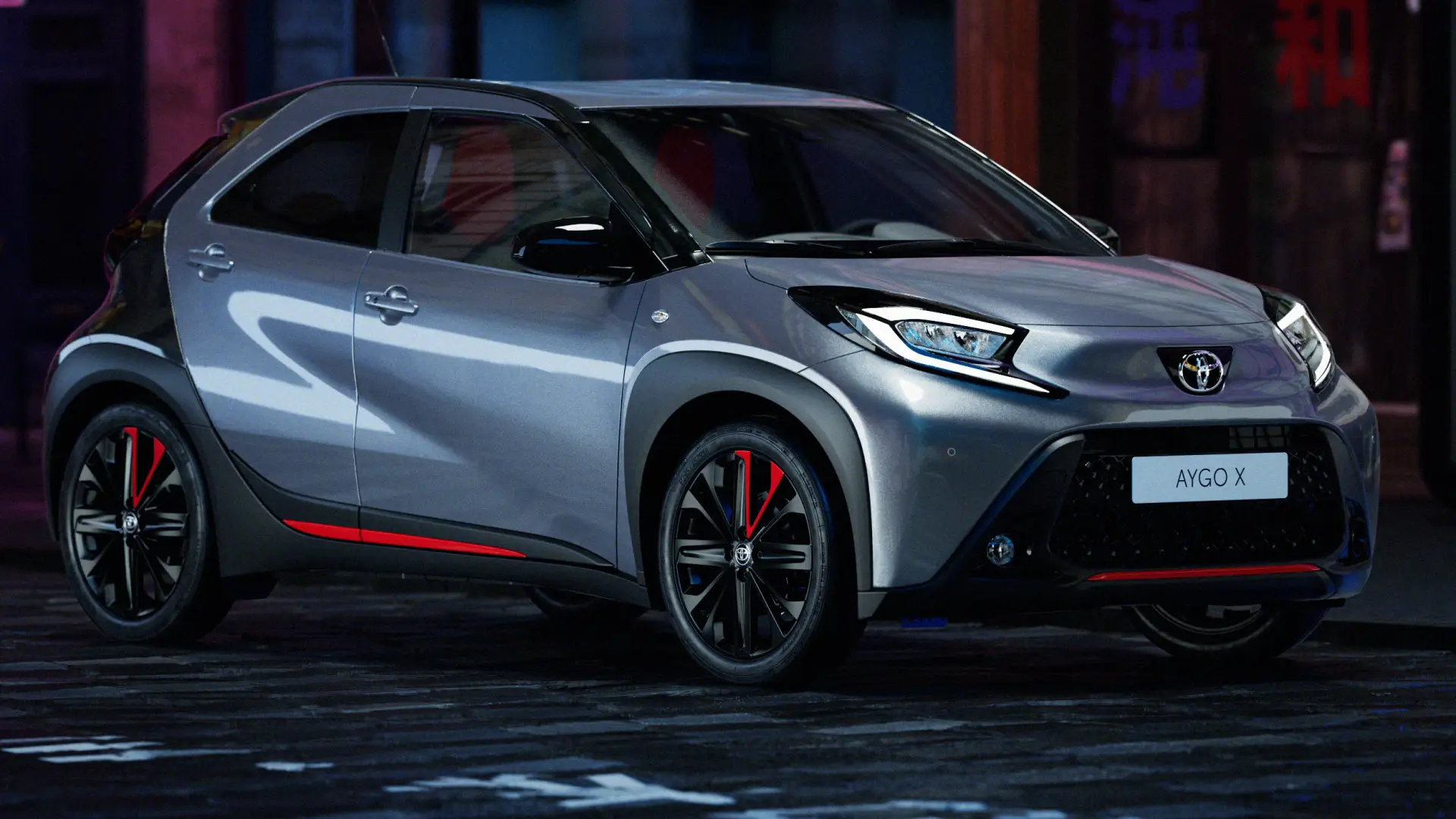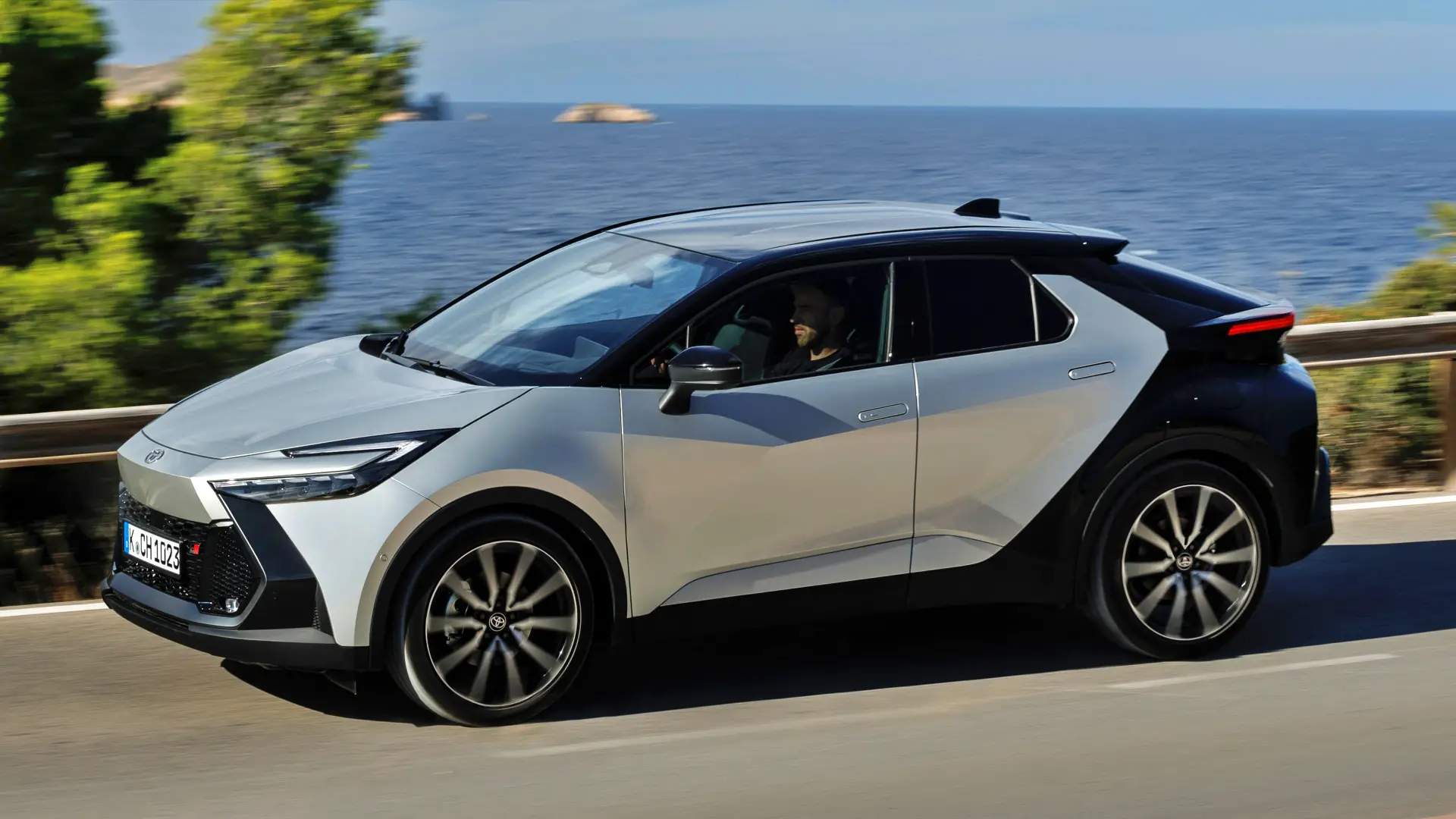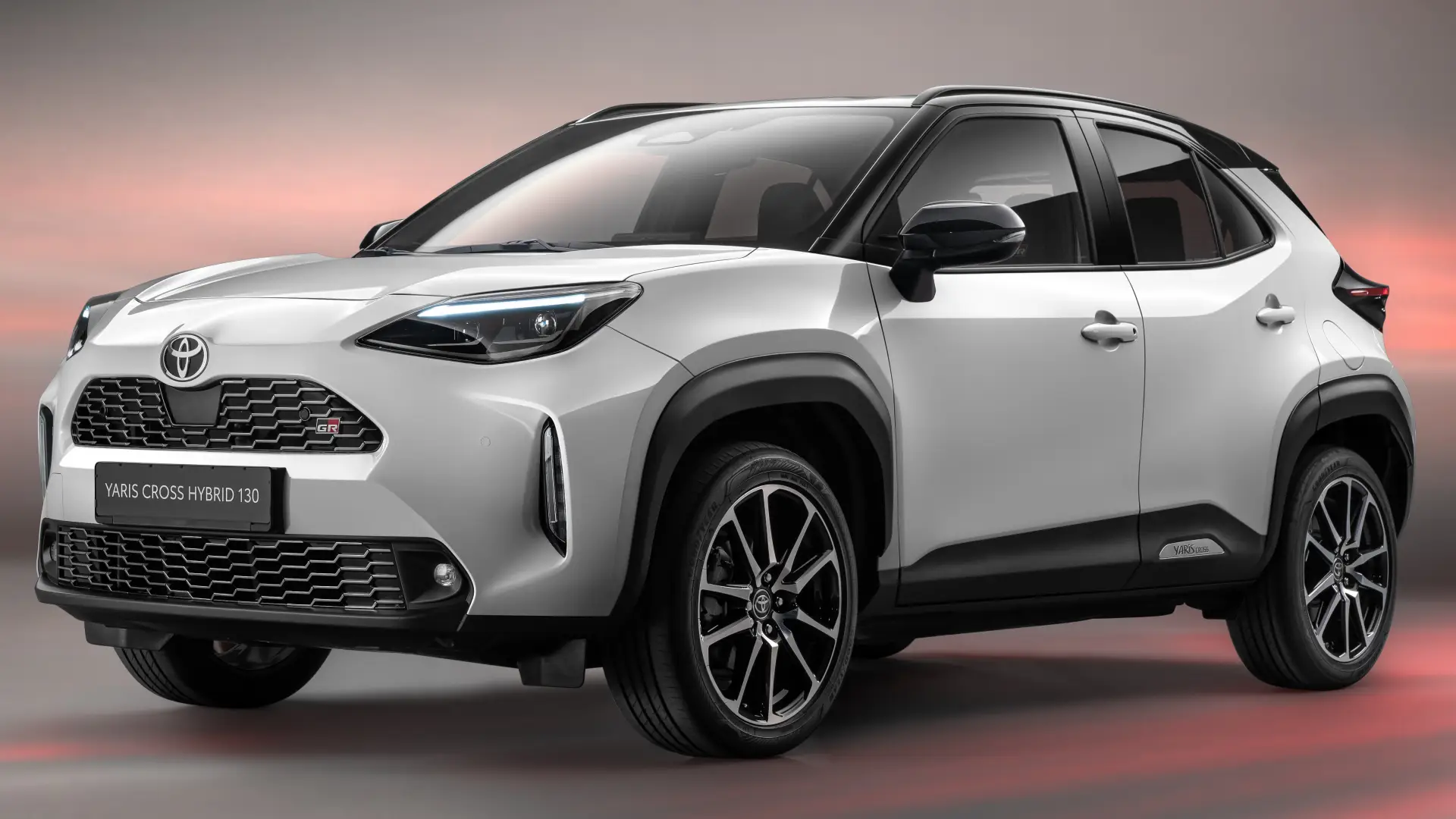The best-selling hybrid SUV in Europe is renewed with a more modern design, much better infotainment, and more space for rear occupants, in addition to two new engines. The history of the Toyota C-HR is a success story. Their numbers say it. More than 840,000 units have been sold on European soil since its launch in 2017, it is always among the best-selling SUVs on the market, and in Europe, it is the best-selling hybrid car in our country (and the second most sold in general, only behind of the Dacia Sandero). With these credentials, and with an increasingly competitive market, creating a new generation is not a trivial matter. Toyota also had the challenge of improving several important weak points, which it has successfully resolved.
If something has characterized the C-HR it has been the design. It was a risky and controversial point in the first generation, whose exterior design was easily polarizing: you either liked it or you hated it.
Exterior design
With this new generation, Toyota has followed the same path. Far from giving up, the Japanese brand has continued with a more risky style than the competition. It is still a design that may not be for everyone, but it has changed a lot compared to the previous generation, especially the front, and it looks like a really modern and even futuristic car from some angles.
It has details that demonstrate the quality of the design, such as the edge of the rear door attached directly to the rear light assembly, without any frame, which provides an avant-garde touch. And, for the first time in a Toyota, it has the door handles flush with the body.
Contrary to what is usual, the new C-HR is 28 millimeters shorter than the previous model, but it is wider (+37 mm). It measures 4.36 meters long by 1.83 wide and 1.56 high. The overhangs are shorter, which also helps change the proportions at first glance.
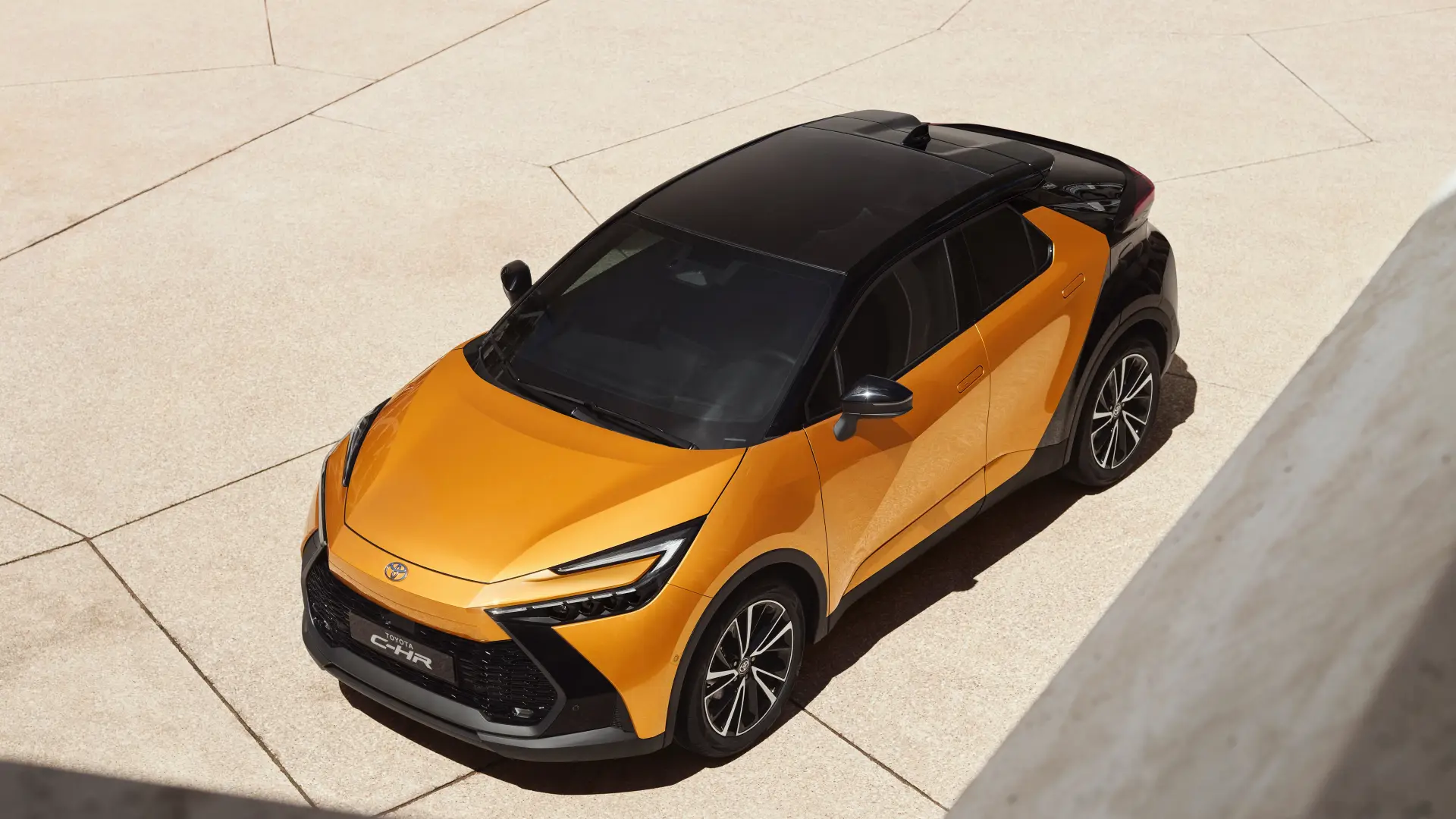
The wheelbase remains the same, but the track width is 30 millimeters wider on the front axle and 25 millimeters wider on the rear axle.
The car can be perceived very differently depending on the color or colors of the bodywork. Toyota debuts in this model a ‘two-tone+’ body that extends the black color throughout the rear and the rear three-quarter area of the vehicle. With this option, the rear doors appear much smaller than they are and offer a different feel to the whole.
The ‘two-tone+’ body can be chosen with four colors: Iceberg Pearl White, Polar Silver, Mediterranean Blue, and Emotion Red. The two-tone body with a contrasting Amethyst, Ascari Grey, Graphite Gray, and Agate Gray roof. There are also seven possible colors if you choose a monotone body.
Inside
If on the outside the changes are very notable, in the cabin, two aspects have been crying out for a change. One of them is the space in the rear seats, which are now wider and not as overwhelming as before. It does not have a notable space for the size of the car, we could say that it is normal. As for the trunk, its capacity ranges between 362 and 388 liters, depending on the version.
If a person who is 1.75 meters tall is driving, there is space behind the knees of someone who is over 1.80 meters tall. The headroom is good, although, due to its width, only two adults can comfortably travel in the rear seats.
The feeling of claustrophobia that the small size of the windows could previously convey has been somewhat reduced. It’s still present – and if you turn your head ninety degrees, you’ll see a piece of plastic instead of glass – but objectively, there’s more than enough space. Perhaps the aspect that could be improved is the access to the rear seats due to the opening angle and the design of the doors.
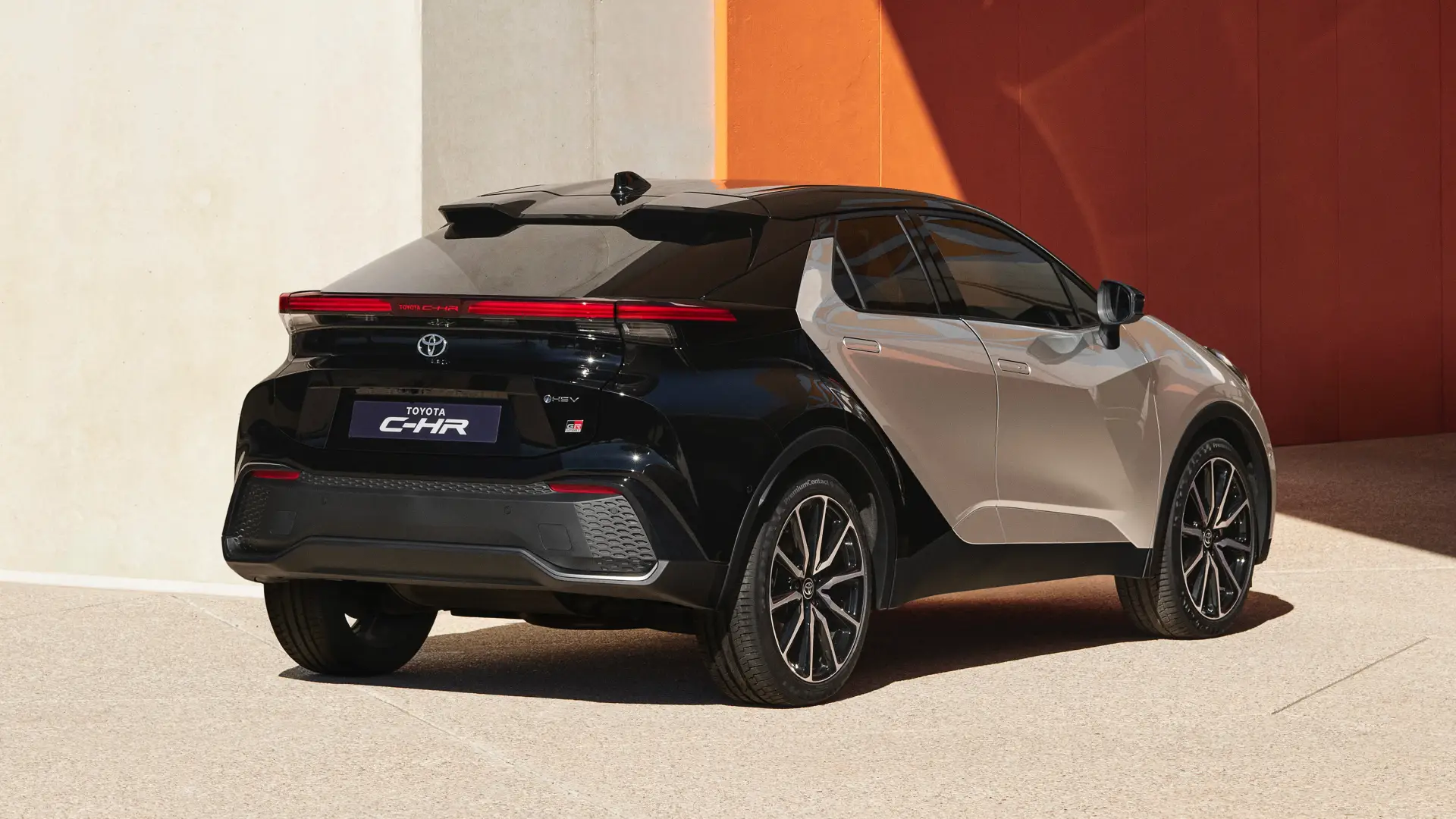
The other improvement, in this case very notable, has to do with the multimedia system. The previous C-HR suffered from a system that was showing its age and has been completely resolved with a modern infotainment system with a clean, simple, and easy-to-use interface, which works well. The touch screen, 12.3 inches diagonal, has a very fast response and the fluidity of a good tablet. It is slightly oriented towards the driver, which makes it easier to handle. And yes, it has wireless connectivity for Android and Apple CarPlay.
On an ergonomic level, there are no strange inventions, everything is in its place. Toyota continues to rely on physical buttons to operate the climate control, the windshield wipers, activate the parking assistant, the peripheral cameras, or choose the driving modes. The gear lever also remains relatively traditional: although it is electronic, it maintains a small knob on the center console.
The finishes are good, with a general presence of hard plastics, but with good apparent quality. The interior design is perhaps less modern than other competing models, nor does it have a combination of different materials and textures (except the GR Sport, which uses Alcantara in some areas), but it makes up for it with solid construction. In front of the co-pilot, there is a practical non-slip surface where you can leave your phone, wallet, or keys. However, the very design of the dashboard means that the glove box cannot be fully opened if an adult is sitting in this position.
Another novelty is the incorporation of an interior ambient lighting system with 64 colors that has a curious program of 24 shades that change with the passing of the day. In a more practical sense, the lighting also serves to warn passengers if an obstacle is approaching when the door is opened, the so-called safe exit alert system, emits a red light to avoid opening and having an incident.
Driving
The two engines are called 140H and 200H. The first has a 98 HP 1.8 gasoline engine that, together with the electric motor, delivers 140 horsepower. The second has a 2.0-liter, 152 HP gasoline engine that combines with a 113 HP electric motor to deliver a total of 196 HP. The most powerful can be chosen with front-wheel drive or electric 4×4 drive.
The first sensation, once on the road, is that the new C-HR is quieter than the previous one. In the GR Sport finish (the first one we tested) it has double windows at the front for better acoustic insulation, something that is quite noticeable.
The new 2.0-liter engine also helps reduce noise. It still has that typical Toyota characteristic of revving the engine more than usual due to the peculiarity of the transmission, but most of the time it works at a lower speed than the 1.8 engine, which reduces noise in the cabin.
The 140H has enough power for any type of user, although the 200H is faster. We measured the latter from 80-120 km/h in 5.7 seconds, two seconds, and two-tenths faster than the 140H. For speed and greater driving pleasure, the 200H would be my option to choose. With equal equipment, the difference between both engines is 2,500 euros.
I also had the feeling that the 2.0 engine is more efficient in real use. With dynamic driving that included highway and a long stretch of mountain, the on-board computer indicated consumption only one-tenth higher (5.1 l/100 km) than in the 1.8, which we drove at a very leisurely pace through urban areas and roads, and with a much flatter terrain. In any case, fuel consumption is very low.
The bittersweet note in the driving experience comes on the climbs when just a touch of gas causes the engine to rev very high.
The suspension is tuned to offer a good level of comfort, as well as greater poise than before, and agile cornering. It has a balanced setup in the most literal sense of the word. It is not the car with which you will go on stretches, but it performs well in curved areas. Of course, the management is not communicative at all.
Prices
The Toyota C-HR range is made up of seven different versions (not counting the Premiere Edition, whose production is temporarily limited), all of them with non-plug-in hybrid engines and 4×2 and 4×4 traction. Prices start at 31,750 euros for the Active finish with a 140-horsepower engine.
- C-HR Active 140H: 31,750 euros.
- C-HR Advance 140H: 32,500 euros.
- C-HR Advance 200H 4×2: 35,000 euros.
- C-HR Advance SkyView 140H: 35,000 euros.
- C-HR Advance SkyView 200H 4×2: 37,500 euros.
- C-HR GR Sport 200H 4×2: 38,500 euros.
- C-HR GR Sport 200H 4×4: 40,500 euros.
The brand is already accepting orders and has begun the first deliveries to customers. Next year the plug-in hybrid version will be included in the range, a first for the C-HR whose prices have not yet been announced.

